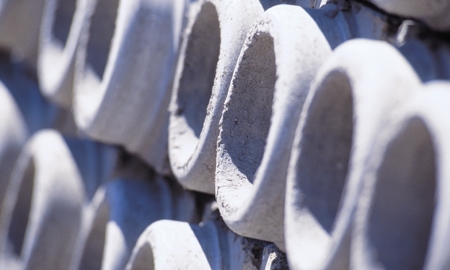“Our wealth is our soil and subsoil,” says Yahir Bachir, Groupe GICA’s CEO. “These are our assets and we are working to make the best use of them.”
While GICA’s cement factories carry out its core activity, the group also has subsidiaries producing aggregates and is in the process of developing a ready-mix concrete business.
GICA produces three types of cement: CPJ 42.5, CPJ 32.5 and CRS 400, a sulfate-resistant product.
“We pay great attention to producing good quality cement,” says Mr. Bachir. “The cement manufacturing process is more complex than people realize.”
Feasibility studies are carried out by the group’s technical center, which specializes in construction material technologies. “The technical center does geological studies to determine where the best raw materials are located, which allows us to produce the best finished product,” says Mr. Bachir.
“During the whole process of fabrication, from the extraction of the raw material to the finished product, we have quality control.”
When demand for cement exceeds supply, priority is given to businesses involved in development projects such as public works or the construction of dams.
“These companies account for 55% of our customers and we can still satisfy their demands even with a deficit of 3 million tons,” says Mr. Bachir.
Three of the GICA group’s subsidiaries produce aggregate: one in the east of Algeria, one in the center of the country and one in the west. Current production is 4.5 tons per year, but it is being increased.
The target of 7 million tons is expected to be reached at the beginning of 2013. As part of its five-year plan, GICA is also launching its planned ready-mixed concrete business this year.
“We are installing 14 ready-mix concrete stations, of which seven will be ready by the end of the year,” says Mr. Bachir. “We are also in discussions with a foreign partner. We could move forward alone but if we can find a partner with whom both sides can win, why not?”
Complementing these activities, the group has industrial maintenance companies, marketing companies and distribution companies.
GICA has three distribution subsidiaries, two in the center of the country and one in the west, while the cement factories in the east have their own distribution network.
“When you are part of the public sector, you have a responsibility to make construction materials available to all of the regions of Algeria,” says Mr. Bachir. “We have a network that goes from Algiers in the north to the borders of Mali and Niger deep in the south.”

0 COMMENTS